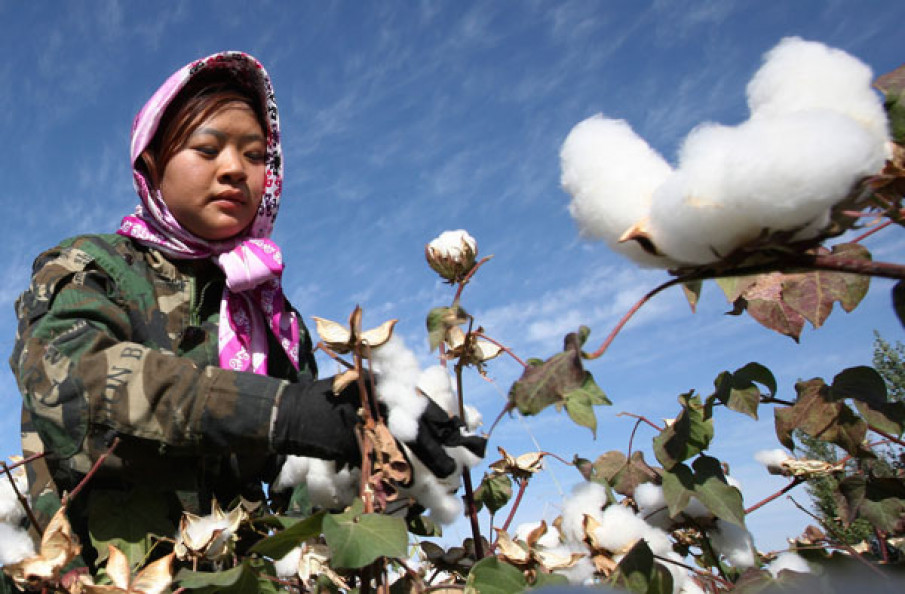China cotton crop planting starts in the beginning of Apr, and market players pay more attention to the planting areas and weather condition. As the Xinjiang cotton production has accounted for about 90% of the national cotton production, market players focus more on the Xinjiang cotton crop planting. The sowing time in South Xinjiang is earlier than that in North Xinjiang. The rainy and frosty weather in South Xinjiang affects the new cotton crop planting somewhat in early Apr, and we analyze the weather condition in South Xinjiang and North Xinjiang.


In early Apr, cotton crop sowing work begins in South Xinjiang and reaches the peak, while in most part of North Xinjiang, sowing has not reached the peak period. In terms of the average temperature, it was 4.3℃ lower from the same period of last year in early Apr in South Xinjiang, and the temperature was 3.1℃ lower year on year in North Xinjiang. Viewed from the historical condition, the temperature in North Xinjiang is relatively normal, while the temperature in South Xinjiang hit the lowest since 2017, and was obviously lower than the same period of last year.

In terms of average precipitation, it was 6.6mm higher from the same period of last year in early Apr in South Xinjiang, and was 3.1mm higher year on year in North Xinjiang. Compared with the historical data, the average precipitation was the highest since 2017 in South Xinjiang.

In terms of average sunshine hours, in early Apr, it was both lower than last year in South Xinjiang and North Xinjiang. The average sunshine hours in South Xinjiang were 23.9 hours lower than the same period of last year, and that in North Xinjiang were 24.7 hours lower.
Therefore, in early Apr, the average temperature was both lower than the same period of last year in South Xinjiang and North Xinjiang, but the temperature was relatively normal in North Xinjiang, while it was obviously lower year on year in South Xinjiang. The precipitation in South Xinjiang was obviously higher year on year, and the sunshine hours in both North Xinjiang and South Xinjiang were lower than the same period of last year. Currently, it is still the early planting period, and the crops that are impacted can be re-planted. The influences of weather on new cotton production needs to be observed continually. Except for Xinjiang, where the temperature is lower than the same period of last year, the temperature in some inland cities is also lower year on year, which also affects the demand for spring and summer orders.
In terms of current industrial situation, for the supply side, market players pay attention to the drought condition in Texas. In China, Xinjiang cotton yield has risen largely last year, and though Xinjiang cotton planting areas may have no big change as18,600yuan/mt target price subsidy policy supports the growers' intention somewhat, whether the yield will maintain high is uncertain facing the challenges from returning farmland to grain, higher land costs and rising fertilizer prices. In addition, market players also pay attention to the time and quantity of state cotton auction and sliding-scale duty quotas. On Apr 7, there were rumors in circulation that China would allocate 2 million tons of sliding-scale duty quotas. Though many market participants have doubt about this news, part of participants thinks the quantity of quotas may be large. If the quotas are allocated in large quantities, it will put great pressure on Chinese cotton. Nevertheless, the supply and demand outside China keeps improving, and the foreign cotton prices may give some support to domestic market. Viewed from the demand side, cotton yarn sales improve somewhat after the Tomb-Sweeping Festival, but the sales are not active, and cotton inventory in spinning mills remain high, so spinners show low buying interests on cotton. In the first half month of Apr, the trading sentiment of cotton market remains thin. Currently, despite of Xinjiang cotton issues, overseas markets may still have replenishment demand with the deployment of vaccines. Demand is not pessimistic. In the medium to long run, cotton prices are still likely to be easy to rise but hard to decline, but the strong upward momentum shall be with the help from the downstream demand.

CCFGroup: New cotton sowing begins in China, temperature in South Xinjiang lower than last year
Το περιεχόμενο του άρθρου δεν είναι διαθέσιμο στη γλώσσα που έχετε επιλέξει και ως εκ τούτου το εμφανίζουμε στην αυθεντική του εκδοχή. Μπορείτε να χρησιμοποιήσετε την υπηρεσία Google Translate για να το μεταφράσετε.

